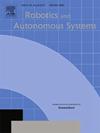机器人柔性夹持器的拓扑形状尺寸优化设计与综合:综述与展望
IF 5.2
2区 计算机科学
Q1 AUTOMATION & CONTROL SYSTEMS
引用次数: 0
摘要
柔性夹具在机器人和自动系统中发挥着至关重要的作用。这篇综述探讨了拓扑、形状和尺寸优化策略在柔性夹持器概念化和进步中的应用。在过去的二十年中,它突出了结构优化技术及其在柔性夹持器合成中的应用的重大进展。核心方法包括有效材料分布的拓扑优化,精炼几何形状的形状优化,以及提高尺寸效率的尺寸优化。这些设计方法的分析与他们的计算复杂性和现实世界的应用。此外,本文还探讨了混合优化方法及其解决多目标挑战的能力等新兴趋势。通过详细的综合,本文为工程师和研究人员提供了宝贵的资源,揭示了现有的限制,并概述了机器人和自动化行业柔性夹持器设计进步和结构优化的创新途径。本文章由计算机程序翻译,如有差异,请以英文原文为准。
Topology-shape-size optimization design synthesis of compliant grippers for robotics: A comprehensive review and prospective advances
Compliant grippers have been playing a critically important role in robotics and autonomous systems. This review explores the utilization of topology, shape, and size optimization strategies in the conceptualization and advancement of compliant grippers. More than the two last decades, it highlights significant progress in structural optimization techniques and their application within compliant gripper synthesis. The core methodologies include topology optimization for effective material distribution, shape optimization for refining geometries, and size optimization for enhancing dimensional efficiency. Such these design methods are analyzed alongside their computational complexities and real-world applications. Additionally, this review examines emerging trends such as hybrid optimization approaches and their capacity to address multi-objective challenges. By providing a detailed synthesis, this paper offers a valuable resource for engineers and researchers, shedding light on existing constraints and outlining prospective avenues for innovation in the design advancement and structural optimization of compliant grippers for the robotic and automation industry.
求助全文
通过发布文献求助,成功后即可免费获取论文全文。
去求助
来源期刊

Robotics and Autonomous Systems
工程技术-机器人学
CiteScore
9.00
自引率
7.00%
发文量
164
审稿时长
4.5 months
期刊介绍:
Robotics and Autonomous Systems will carry articles describing fundamental developments in the field of robotics, with special emphasis on autonomous systems. An important goal of this journal is to extend the state of the art in both symbolic and sensory based robot control and learning in the context of autonomous systems.
Robotics and Autonomous Systems will carry articles on the theoretical, computational and experimental aspects of autonomous systems, or modules of such systems.
 求助内容:
求助内容: 应助结果提醒方式:
应助结果提醒方式:


